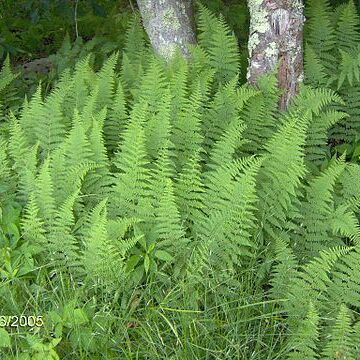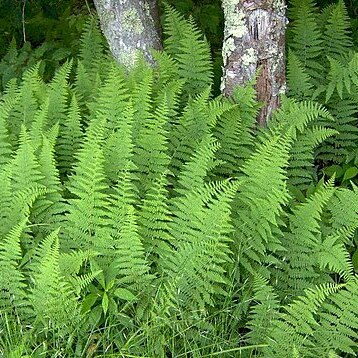Plants terrestrial, often forming colonies. Stems subterranean, long-to short-creeping; hairs dark reddish brown, jointed. Leaves clustered or scattered, erect to arching, ovate to lanceolate to deltate, 0.4--3 m. Petiole glabrous to pubescent, usually without prickles, often with stem buds near base; vascular bundles 1--2, arranged in U-or O-shape in cross section. Blade 2--4-pinnate; rachis without prickles; nectaries absent. Segments pinnately divided, ultimate segments ovate to lanceolate, margins dentate or lobed. Veins free, pinnately branched. Sori marginal at vein tips, distinct, round or cylindric; indusia formed by fusion of true indusium and minute blade tooth to form circular or slightly 2-valvate cup. Spores tetrahedral-globose, trilete (rarely monolete), tuberculate or ridged. x = 34, 46, 47.
Terrestrial ferns. Rhizomes short-to long-creeping, hairy. Fronds often large, pinnate (not in Australia) to 4-pinnate; veins free; scales absent; fronds and rhizomes hairy or sometimes glabrous and spiny (not in Australia). Sori round or ovate, marginal, on a slightly raised receptacle terminating the veins, sometimes with paraphyses, protected by cup-shaped or slightly bivalvate indusia with downturned edges; bivalvate indusium formed from a true inner indusium and an outer modified inrolled lamina flap. Spores trilete, coarsely ridged or reticulate.
Petiole with a single gutter-shaped bundle; lvs soft, membranous, their veins free, apically thickened, not reaching the margin; sori marginal at the vein-tips, the thin, whitish, cupulate indusium formed partly by a recurved modified tooth of the lf-margin; sporangia few; delicate ferns with elongate, branched rhizomes and fragrant, distant, erect, deciduous compound lvs, the rhizome, petiole and blade with septate hairs. 70, mainly trop.
Rhizome slender, creeping, hairy


